Summary Overview
HEOR Services Market Overview
The global Healthcare and Employee Occupational Rehabilitation (HEOR) services market is steadily expanding, driven by rising demand from a variety of industries including healthcare providers, insurance, pharmaceuticals, and government organizations. This market includes a diverse set of HEOR solutions, such as cost-effectiveness analysis, outcomes research, and individualized evaluations. Our research provides a thorough analysis of procurement trends, emphasizing cost-cutting initiatives and the use of digital tools to improve both procurement and operational procedures in HEOR services.
Key potential difficulties in the HEOR procurement landscape include managing rising service costs, maintaining scalability to meet increased demand, protecting sensitive patient data, and integrating HEOR services throughout existing healthcare systems. The use of digital tools for pharmaceutical data analysis and strategic purchasing is critical for optimizing HEOR service delivery while ensuring long-term market competitiveness. As the global demand for evidence-based health solutions grows, companies are using market information to increase operational efficiency, improve patient outcomes, and reduce healthcare delivery risks.
Market Size: The global HEOR Services market is projected to reach USD 10.5 billion by 2035, growing at a CAGR of approximately 8.61% from 2025 to 2035.
Growth Rate: 8.61%
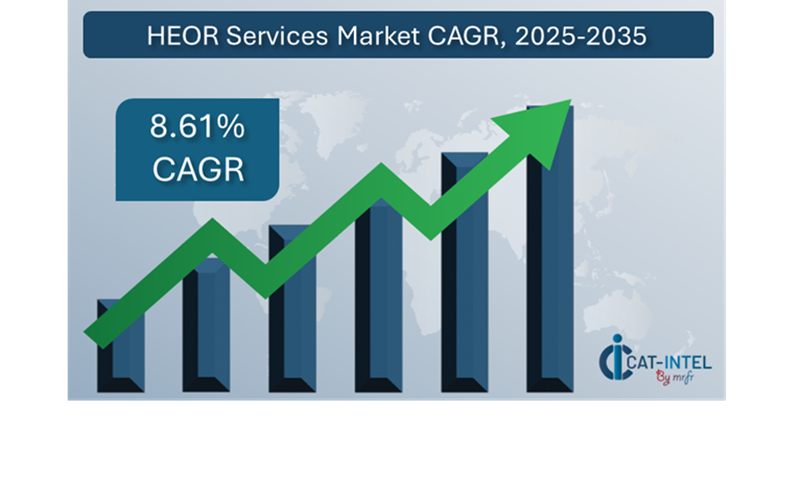
- Sector Contributions: Growth in the market is driven by:
- Healthcare and Rehabilitation Process Optimization: Real-time data analytics and the integration of rehabilitation and healthcare processes are required to improve patient outcomes and streamline healthcare operations.
- Increased Demand for Telehealth and Remote Care: The growth of telehealth and virtual care has expedited the adoption of HEOR services that improve patient management, treatment efficacy, and outcome tracking.
- Technological Transformation: AI, machine learning, and predictive analytics are transforming the HEOR field, allowing for better health outcomes predicting and rehabilitation tactics.
- Healthcare Solutions: HEOR service providers provide modular solutions to meet unique healthcare needs, decreasing costs and complexity in healthcare management.
- Investment Initiatives: Healthcare providers and insurance companies are investing substantially in cloud-based platforms for HEOR services to reduce infrastructure costs, increase scalability, and enhance data availability for rehabilitation management.
- Regional Insights: The HEOR market is growing in North America and Asia Pacific, led by strong healthcare infrastructure, digital health adoption, and rising demand for data-driven rehabilitation solutions.
Key Trends and Sustainability Outlook:
- Cloud Integration: Adopting cloud-based HEOR services helps healthcare companies scale operations, reduce infrastructure costs, and increase patient data availability for real-time choices and rehabilitation.
- Advanced Features: The integration of AI, IoT, and blockchain technology in HEOR services enhances decision-making, treatment monitoring, and transparency in patient data management.
- Focus on Sustainability: Prioritize sustainability by enhancing health resource tracking, reporting, and management, strengthening long-term care methods, and minimizing waste in rehabilitation services.
- Customization Trends: HEOR services are specifically tailored for industries such as healthcare, insurance, and rehabilitation to meet unique demands such as chronic disease management, mental health rehabilitation, and geriatric care.
- Data-Driven Insights: HEOR services utilize advanced data analytics to estimate treatment effectiveness, optimize rehabilitation programs, and monitor health initiatives.
Growth Drivers:
- Digital Transformation: Using data-driven decision-making to increase medical staff productivity, optimize rehabilitation processes, and improve patient outcomes.
- Demand for Process Automation: HEOR services can automate operations like treatment planning, progress tracking, and patient feedback gathering to decrease operational bottlenecks and improve rehabilitation program efficiency.
- Scalability Needs: As healthcare systems develop, there is a demand for scalable HEOR services that can support growing patient populations and integrate seamlessly with existing infrastructure.
- Regulatory Compliance: To satisfy regulatory compliance requirements, automate health reporting, ensure data accuracy, and keep accurate records of patient progression and treatment outcomes.
- Globalization: Demand for HEOR systems that facilitate multi-lingual and multi-regulatory contexts is expanding, especially in international healthcare organizations that need to comply with diverse global healthcare standards.
Overview of Market Intelligence Services for the HEOR Services Market
Recent investigations have identified important problems in the HEOR services market, including high service costs and the requirement for tailored solutions. Market intelligence studies provide meaningful insights into procurement prospects, assisting firms in identifying cost-cutting measures, optimizing supplier management, and ensuring successful implementation. These insights also ensure industry compliance, high-quality operational operations, and smart cost management.
Procurement Intelligence for HEOR Services: Category Management and Strategic Sourcing
To remain competitive in the HEOR services market, healthcare providers and organizations are optimizing procurement procedures by analysing spend and tracking service provider performance. Effective category management and strategic sourcing are critical for lowering procurement costs while maintaining a continuous supply of high-quality HEOR products. By employing meaningful market intelligence, firms may enhance their procurement strategies and negotiate advantageous terms for their HEOR service needs.
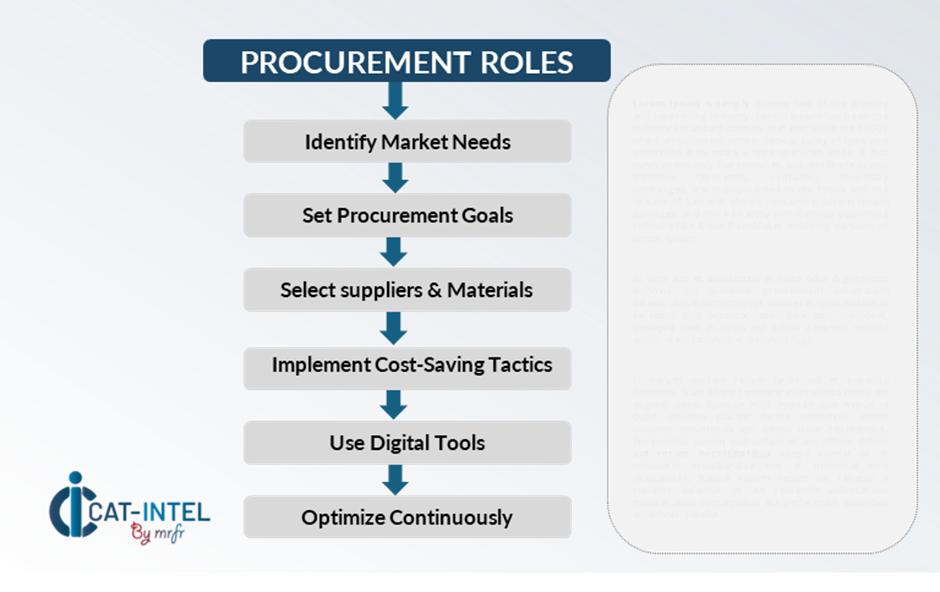
Pricing Outlook for HEOR Services: Spend Analysis
The pricing prognosis for HEOR services is likely to be moderately dynamic, with swings caused by a variety of variables. Advancements in healthcare technology, increased need for data-driven insights, customized requirements, and regional pricing variances are just a few examples. Furthermore, the growing usage of AI, IoT, and data safety precautions puts increased pressure on HEOR service cost.
Graph shows general upward trend pricing for HEOR Services and growing demand. However, there may be fluctuations influenced by economic conditions, technological advancements, and competitive dynamic.
Efforts to streamline vendor management and provide modular service solutions are critical for cost control. Leveraging digital tools for market monitoring, analytics-based pricing predictions, and effective contract administration can help to reduce costs even more.
Partnering with reputable HEOR providers and establishing long-term relationships with trusted service providers might aid in negotiating attractive pricing models: Flexible pricing methods, such as service subscriptions or multi-year contracts, can provide cost benefits. Subscription-based models and multi-year contracts offer chances to achieve reduced rates while reducing the possibility of price increases over time.
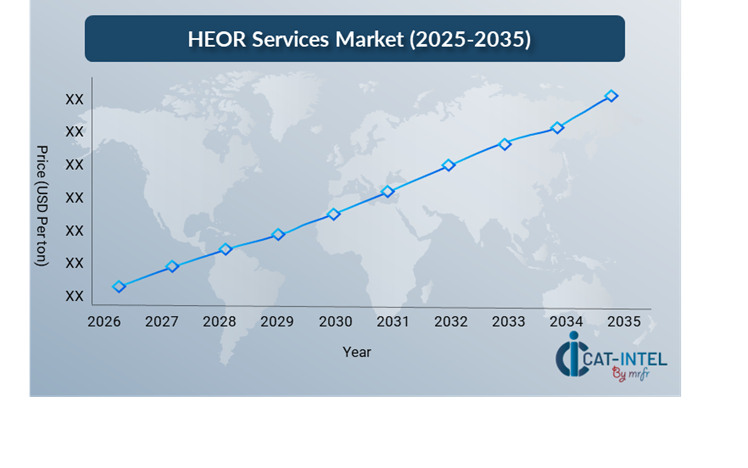
Cost Breakdown for HEOR Services: Total Cost of Ownership (TCO) and Cost-Saving Opportunities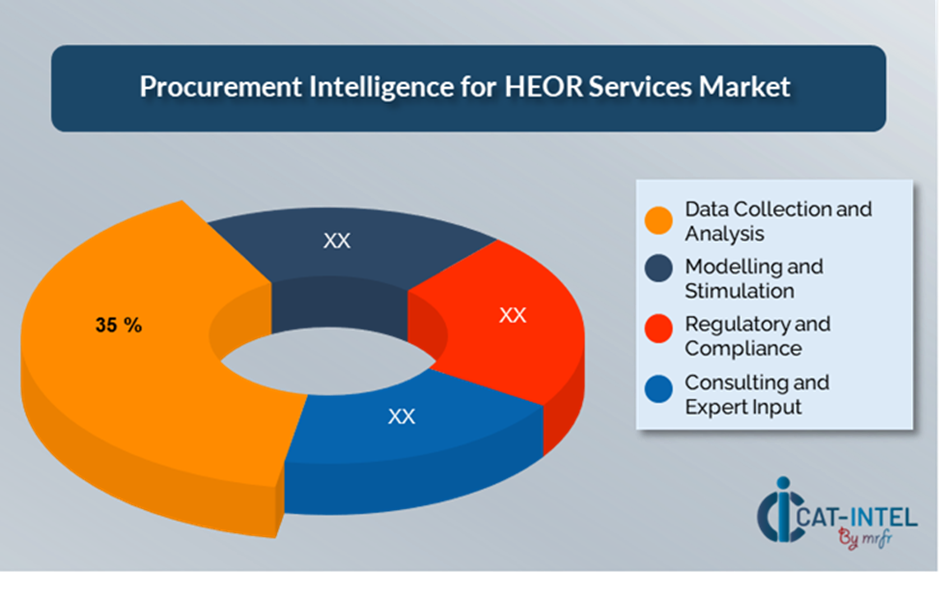
- Data Collection and Analysis: (35%)
- Description: This accounts for a large amount of the HEOR costs associated with collecting and interpreting real-world data, clinical results, and financial impact assessments.
- Trends: The cost of data collecting is rising as the need for real-world evidence (RWE) and big data analytics increases. Using data analysis powered by AI and automated tools can assist optimize these procedures, resulting in cost savings.
- Modelling and Simulation: (XX%)
- Regulatory and Compliance: (XX%)
- Consulting and Expert Input: (XX%)
Cost-Saving Opportunities: Negotiation Levers and Purchasing Negotiation Strategies
In the HEOR (Healthcare and Employee Occupational Rehabilitation) services market, streamlining procurement processes and using strategic negotiation strategies can result in considerable cost savings and increased operational performance. Long-term relationships with reputable HEOR service providers, particularly those that provide cloud-based solutions, can result in more attractive pricing structures and terms, such as volume-based discounts and bundled service packages.
Collaborating with HEOR providers who promote innovation and scalability provides additional benefits, including access to advanced data analytics, AI integration, and customized service modules. Using digital tools for procurement, such as contract management systems and use analytics, can increase transparency, reduce over-provisioning, and maximize service utilization. reduce risks such as service disruptions and improve negotiation leverage, delivering a more robust and cost-effective approach to acquiring HEOR services.
Supply and Demand Overview for HEOR Services: Demand-Supply Dynamics and Buyer Intelligence for Effective Supplier Relationship Management (SRM)
The HEOR (Healthcare and Employee Occupational Rehabilitation) services market is growing steadily, owing to increased acceptance of digital transformation and technical improvements in sectors such as healthcare, rehabilitation, and insurance. Industrial needs, regulatory constraints, and global economic situations all have an impact on supply and demand dynamics.
Demand Factors:
- Digital Transformation Initiatives: The growing requirement for centralized health data administration and process automation is boosting demand for HEOR services in the healthcare and rehabilitation industries.
- Cloud Adoption: The need for scalable, accessible, and subscription-based models that enable healthcare providers and rehabilitation centres to access crucial data anytime and anywhere, enhancing decision-making and patient management.
- Industry-Specific Requirements: Healthcare and rehabilitation industries require HEOR services that adhere to certain regulatory standards, treatment procedures, and patient management systems.
- Integration Capabilities: HEOR services must interface smoothly with other healthcare systems and devices, particularly IoT-enabled ones, to meet growing demand.
Supply Factors:
- Technological Advancements: AI, machine learning, and data analytics are improving HEOR solutions, making them more accurate, predictive, and personalized for specific patients.
- Vendor Ecosystem: The expanding number of HEOR providers, ranging from specialist niche enterprises to bigger providers, ensures that healthcare institutions have a diverse range of options.
- Global Economic Factors: Exchange rates, labour costs, and regional technology adoption rates impact the pricing and availability of HEOR services worldwide.
- Scalability and Flexibility: Modern HEOR services are more modular, with suppliers and the capacity to accommodate organizations of various sizes and complexities.
Regional Demand-Supply Outlook: HEOR Services
The Image shows growing demand for HEOR Services in both North America and Asia Pacific, with potential price increases and increased Competition.
North America: Dominance in the HEOR Services Market
North America, particularly the United States, is a dominant force in the global HEOR Services market due to several key factors:
- Advanced Healthcare Infrastructure: North America, notably the United States, boasts a well-established and sophisticated healthcare infrastructure that includes hospitals, research institutions, and insurance companies.
- Evidence-Based Medicine: North America places a premium on evidence-based medicine and healthcare decision-making, with HEOR playing an important role in gathering data for cost-effectiveness studies, clinical guidelines, and policy formulation.
- Regulatory Environment: The FDA and other regulatory agencies frequently need economic models and outcomes research as part of the clearance process for new medications, devices, and healthcare interventions, which drives up demand for HEOR services.
- Large Pharmaceutical Industry: North America has significant pharmaceutical and biotechnology businesses that invest heavily in research and development (R&D) to evaluate the economic impact of their medications, decide pricing strategies, and get reimbursement approvals.
- Insurance and Payment Models: North America's numerous health insurance carriers and public payer systems, such as Medicare and Medicaid, create a high need for HEOR. These groups use economic evaluations to define reimbursement levels, negotiate prescription pricing, and assess the value of therapies.
North America Remains a key hub HEOR Services Price Drivers Innovation and Growth
Supplier Landscape: Supplier Negotiations and Strategies
The HEOR services supplier landscape is similarly diversified and competitive, with global healthcare leaders and regional service providers shaping market dynamics. These suppliers have a substantial influence on pricing structures, service personalization, and the quality of healthcare and rehabilitation outcomes. The market is dominated by well-established service providers that provide comprehensive HEOR solutions, while smaller, specialized competitors focus on specific healthcare sectors or new features like enhanced analytics, AI integration, and patient-centric care models.
The HEOR supplier ecosystem in key worldwide regions includes both established multinational providers and new local companies responding to industry-specific demands, such as those in healthcare, rehabilitation, and insurance. As healthcare organizations prioritize digital transformation, improving patient outcomes, and optimizing rehabilitation services, HEOR suppliers are expanding their capabilities by integrating cloud solutions, adopting cutting-edge technologies, and providing flexible subscription models to meet the healthcare market's growing and evolving demands.
Key Suppliers in the HEOR Services Market Include:
- IQVIA
- Covance
- Xcenda
- Truven Health Analytics
- AbbVie
- Boston Healthcare Associates
- Health Strategies Group
- PHMR
- Evidera
- Celerion
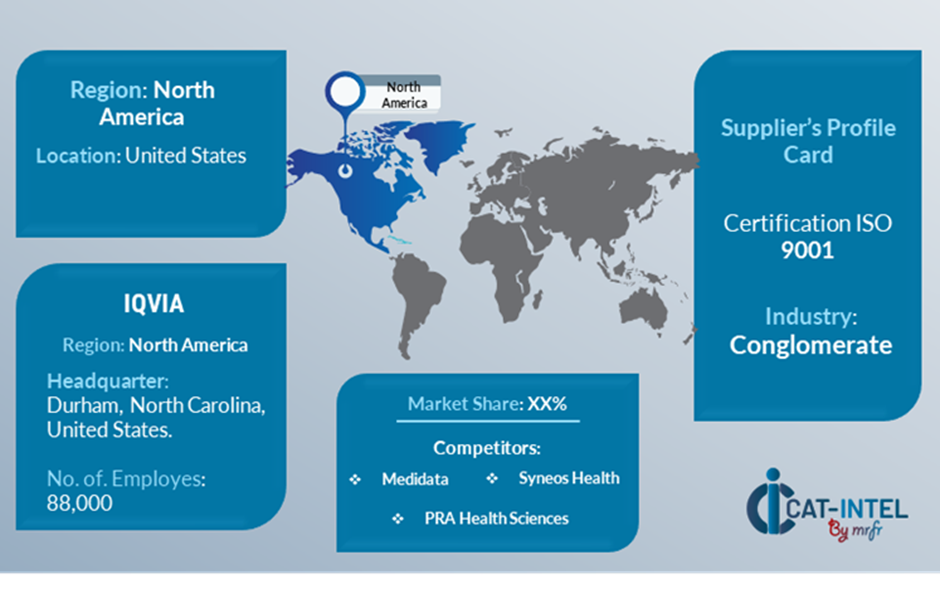
Key Developments Procurement Category Significant Development:
Significant Development |
Description |
Market Growth |
Healthcare businesses, particularly those following hybrid care models, are adopting cloud-based services in order to improve data management, real-time decision-making, and seamless connectivity across many healthcare systems. |
Cloud Adoption |
The HEOR services market is expanding rapidly due to increased usage by healthcare providers, rehabilitation centres, and insurance companies seeking to improve patient outcomes, streamline rehabilitation processes, and enhance decision-making. |
Product Innovation |
HEOR service providers are increasing their capabilities by including AI-powered analytics, instantaneous data processing, and industry-specific modules designed to satisfy the unique needs of industries such as healthcare, rehabilitation, and insurance. |
Technological Advancements |
Advancements in machine learning, IoT integration, and robotic process automation (RPA) are improving HEOR capabilities. These technologies drive predictive insights, automate gathering and analysing data, and allow for more effective management of rehabilitation initiatives and patient treatment plans. |
Global Trade Dynamics |
Changes in trade rules, compliance requirements, and regional economic policies all have an impact on HEOR service acceptance, especially for international healthcare firms that manage various regulatory environments and complicated healthcare systems. |
Customization Trends |
Customized HEOR services are becoming increasingly popular among healthcare organizations and rehab providers looking for flexible, bespoke solutions. |
|
HEOR Services Attribute/Metric |
Details |
Market Sizing |
The global HEOR Services market is projected to reach USD 10.5 billion by 2035, growing at a CAGR of approximately 8.61% from 2025 to 2035. |
HEOR Services Technology Adoption Rate |
Approximately 60% of healthcare providers worldwide have implemented HEOR solutions, with an increasing trend toward cloud-based platforms for increased scalability, accessibility, and data exchange. |
Top HEOR Services Industry Strategies for 2025 |
Integrating AI and machine learning for advanced data analytics, providing modular solutions to address specific sector demands, increasing patient-centred care through integrated insights, and stressing cybersecurity to secure sensitive healthcare data are all key goals. |
HEOR Services Process Automation |
To improve operational efficiency and decrease manual errors, around half of HEOR systems automate regular processes like as data processing, reporting, and regulatory compliance. |
HEOR Services Process Challenges |
Major problems include elevated service costs, data integration issues, reluctance to new technology among healthcare teams, and the requirement for continual service changes and patient data management. |
Key Suppliers |
Leading HEOR service providers include IQVIA, PRA Health Sciences, and Veristat, who provide comprehensive solutions geared to the healthcare, insurance, and rehabilitation industries. |
Key Regions Covered |
North America, Europe, and Asia-Pacific are key regions for HEOR service adoption, with strong demand in the healthcare, rehabilitation, and insurance industries |
Market Drivers and Trends |
The growing need for centralized health data management, the increasing acceptance of cloud-based solutions, the desire for real-time patient insights, and the integration of sophisticated technologies such as IoT, AI, and machine learning are all driving growth. |

